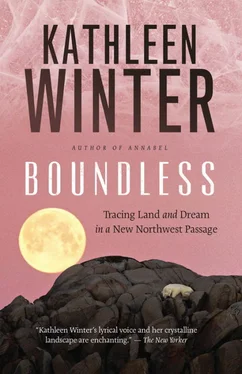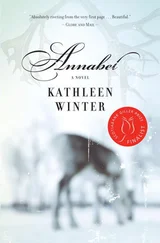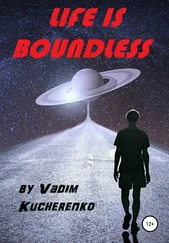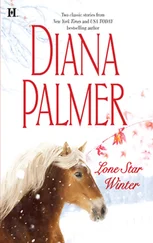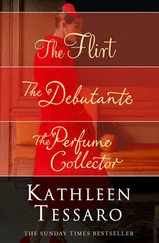“This—” I gestured to one of Shoofly’s beaded scenes on the hood of the tuilli, a story that must have taken as long to make as it took any scientist or documentary filmmaker or writer to create a scene of daily life anywhere.
“It’s a hunting scene,” said Laila Williamson. “Hunting caribou.”
The beads were red, yellow, black, blue, and white, except for the hunter, in green pants and a pink shirt. The caribou was red and over the scene hung resplendent stars.
Bernadette had told me she’d written a piece about the tuilli for an exhibit called Infinity of Nations at the National Museum of the American Indian. In it she called the caribou-hunting scene her favourite image on the garment. She told me Shoofly would have loved knowing her descendants still hunt caribou and harvest skins for clothing and boots. In the piece, she said her elders told her parts of the designs were suggested to Shoofly by George Comer, and she wondered if those might be the stars or the breastplate’s geometric forms. But those forms, I saw, looked like the pods, flowers, and seeds I’d seen in the Arctic. And what was this, also on the breastplate — a pair of Victorian walking boots? They had sturdy but fashionable heels and looked to me like old-fashioned European boots with hooks and buttons, definitely not for walking over the tundra.
Bernadette would tell me, when I later asked her about the boots, that George Comer gave Shoofly a pair of dainty European boots for walking the sidewalks of London or New York with an umbrella in your hand as you fed pigeons or ogled, as my daughter and I had done, spangles hung round a black velvet throat inside Tiffany’s plate glass. Comer gave Shoofly boots to which any woman might thrill, be she in brogues like Laila Williamson’s or in the decrepit specimens I’d lashed to our abandoned Arctic ship. Comer gave Shoofly boots a lover gives a woman, but he had another life with another wife so did not every night caress Shoofly’s feet with his hands. Or maybe he was simply not the most observant man or maybe he stole the boots of Julia, his white wife, for Shoofly, thinking all women’s feet were the same. In any event, the boots were too small, and what did Shoofly do with a pair of mouth-watering boots that didn’t fit? She sewed their image on her tuilli in beads so she could walk the land displaying their glory anyway.
“Are you working on anything exciting now?” I asked Laila Williamson. I sensed she wished to get back to other preoccupations.
“As a matter of fact, we’ve just received a collection from Indians of western Mexico…”
Downstairs, Ahnighito waited for me. Beside it, much smaller, stood the Woman and the Dog. I felt as I had when I sat on ground in the North with rocks that stood under the Arctic sky. For once, the flight impulse of a mind inclined to immaterial things had come home, was tethered and nourished by the ground. Ground is both magnet and celestial body, hurtling in space and attracting other bodies. Ahnighito, the Woman, and the Dog are like my husband’s giant hand on my heart when I’m nervous or sad. They have a wordless power, a comfort, and they speak using not words but substance — the inchoate origin of all words. The Dog is little and smooth — like a real dog, in proportion to Ahnighito and the Woman — a playful and beloved one. I could see how Greenlandic people had chipped pieces for their tools, leaving pockmarks, organic and purposeful, before being interrupted by Peary, who won their confidence then made the Dog, Tent, and Woman disappear.
“ Spectacular samples from around the planet… ” booms a generic film voiceover from the display room next door. A woman and her children traipse past Ahnighito, and the mother gives a textbook explanation of meteorites without glancing at Ahnighito, the Dog, or the Woman.
We were using it , I imagine I hear a hunter tell Peary.
Upstairs I knew Laila Williamson might be carefully folding Shoofly’s tuilli away. I had not asked her if I could also see Shoofly’s leggings and hair ornaments. Laila Williamson had been courteous and forthcoming, yet I felt sad somehow. Sitting with Ahnighito and its companions, touching them, feeling where hunters once scooped metal from the Woman and the heartbreaking, curved Dog — why couldn’t Peary have left the Greenlandic people the Dog, the Woman, and their shelter, Ahnighito?
I later asked Bernadette where Ahnighito’s name came from.
“We have a word in our language, in my dialect — angijuq — for large, or big. So the word you wrote down has the same roots, but men — English-speaking men — at that time wrote differently or guessed at the word.”
The Museum of Natural History makes allowances for guesswork while remaining as precise and scientific as it can. “Medium octahedrite,” it calls the specific iron composition of Ahnighito, while proclaiming on a plaque that the story of the Tent, the Woman, and the Dog might have been made up by hunters especially for Peary, to please him. The stone sits unknown and unheard by the hordes that do what people do in museums — they come to learn, but what are they learning?
LATER, ON A January day in Montreal, the sun shone and I was aware that the tundra was not under my feet. Rue Jean-Talon was under my feet, its sidewalks covered in ice. Grace notes that morning were limited to a flight of pigeons from drugstore eave to dilapidated bus shelter. I walked past an apartment block and noticed for a second time that week that while it was minus sixteen degrees Celsius, a grate emitted gusts of air warm as a summer day. Our prime minister had told world leaders at the latest European summit on the global economy that there was no point in setting caps on greenhouse gas emissions because to do so was unrealistic. The Spanish prime minister looked at him as if he were from another planet, and responded that if we did not change our behaviour globally, we’d perish.
Montreal’s trees were not in their glory. They had no leaves. Starlings and pigeons chose to roost in gutters and on sills instead, leaving the trees bare, bark cracked and gleaming with ice under a frozen sky. Passersby ignored the trees: dog walkers, office workers hurrying with coffee in paper cups, old women huffing with canes and bags of apples and toilet paper.
I remembered how, years ago, I’d sensed a glory within such ordinary things: starlings, branches, the humble loveliness of alleys or weeds in vacant lots. Yet I’d felt, even when young, that along with its loveliness the earth faced an elusive threat about which no one spoke: we went on as if life as we knew it, in our fortunate part of the world, would chug on forever.
Even now, people continued to act this way, when everyone had heard at least some alarm bells clanging about dangers to the planet. It astonished me that we remained so capable of “business as usual” when the rules of life had so obviously altered.
Though bare and cracked, the winter city trees had a vocabulary of bud and intersecting branches reaching up, interlaced and poignant in their yearning for light: they had presence , and it was a presence I now felt if I concentrated on listening, on intercepting in the way the Arctic land had taught me. A tree had a body as I have a body. Its roots reached deep for clear water. We forgot about the roots and how powerful trees were; not powerful in self-defence or advancement, or in any of the frontier-busting, action-packed kinds of power commonly understood, but powerful in presence and gravity. If I listened and received what the trees had to say, even winter city trees, I heard the story of someone beautiful going unheard. What did the earth say as we hurried on our quotidian errands? It said, “ Listen! Something new is going on. ”
Читать дальше
